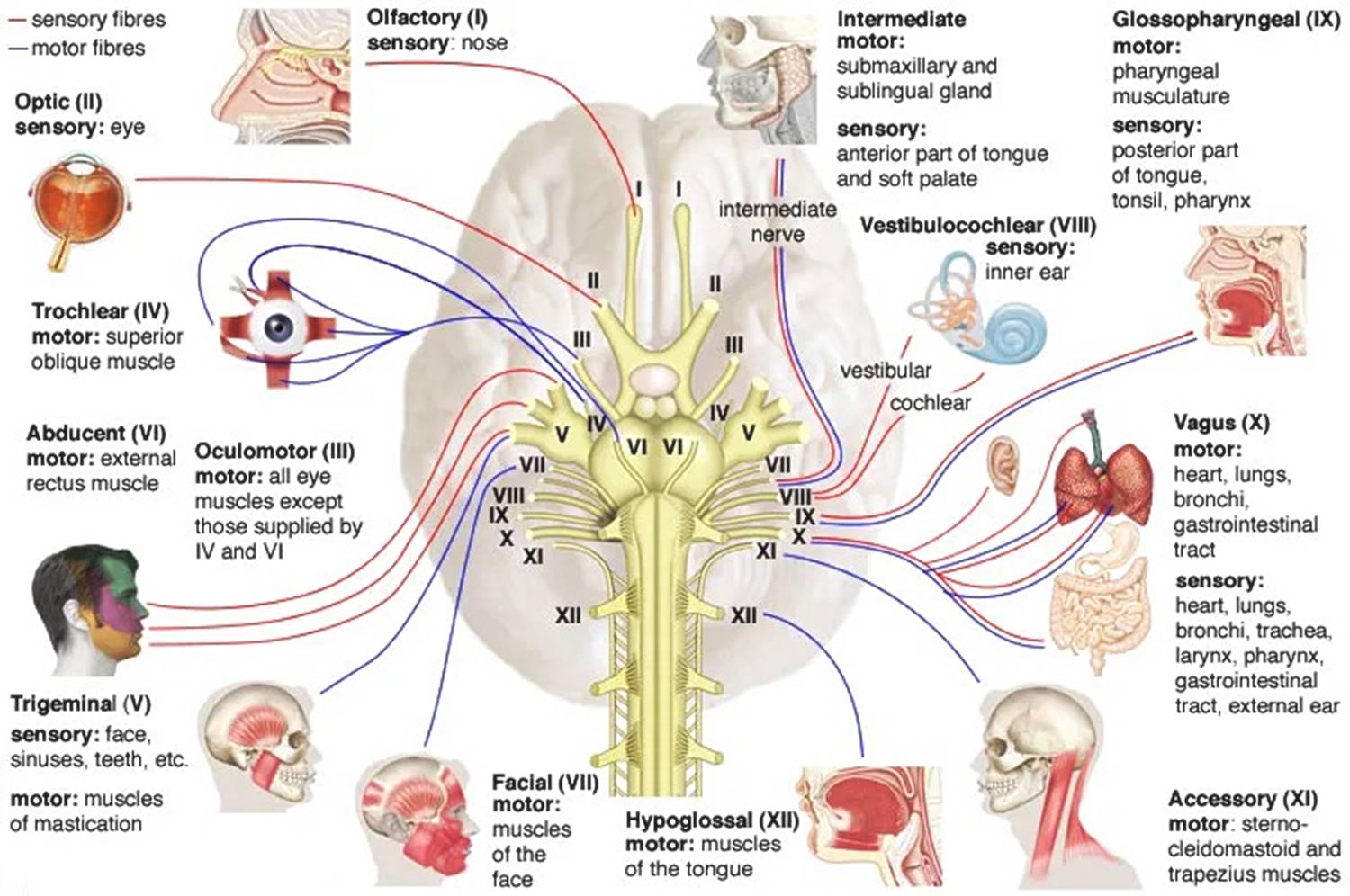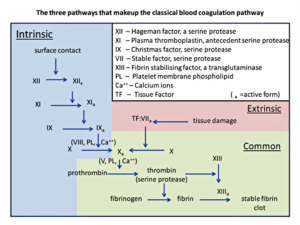Cranial nerves are a crucial part of the nervous system, responsible for connecting the brain with various parts of the head, neck, and trunk. These nerves control essential functions such as vision, hearing, taste, and facial movements. This article provides an overview of the cranial nerves, detailing their anatomy, functions, and clinical significance.
Overview of Cranial Nerves
Humans have twelve pairs of cranial nerves, each with specific roles and pathways. These nerves are numbered based on their position from the front to the back of the brain, using Roman numerals I through XII. The cranial nerves include:

| Cranial Nerves List | Location | Type | Function |
| Olfactory (I) | Cribriform plate | Sensory | Smell |
| Optic (II) | Optic foramen | Sensory | Vision |
| Oculomotor (III) | Superior orbital fissure | Motor | Eye movement |
| Trochlear (IV) | Superior orbital fissure | Motor | Eye movement |
| Trigeminal (V) | Superior orbital fissure | Mixed | Facial sensation |
| Abducens (VI) | Superior orbital fissure | Motor | Eye movement |
| Facial (VII) | Internal auditory canal | Mixed | Facial expression |
| Vestibulocochlear nerve (VIII) (auditory vestibular nerve) | Internal auditory canal | Sensory | Hearing and balance |
| Glossopharyngeal (XI) | Jugular foramen | Mixed | Oral sensation and taste |
| Vagus (X) | Jugular foramen | Mixed | Vagus nerve |
| Accessory (XI) | Jugular foramen | Motor | Shoulder elevation and head-turning |
| Hypoglossal (XII) | Hypoglossal | Motor | Tongue movement |

- Olfactory Nerve (I): Responsible for the sense of smell, this nerve carries sensory information from the nasal cavity to the brain.
- Optic Nerve (II): Transmits visual information from the retina to the brain, allowing for vision.
- Oculomotor Nerve (III): Controls most of the eye’s movements, including constriction of the pupil and maintaining an open eyelid.
- Trochlear Nerve (IV): Controls the superior oblique muscle of the eye, which helps in rotating the eyeball.
- Trigeminal Nerve (V): A major sensory nerve of the face, it also controls muscles involved in chewing. It has three branches: ophthalmic, maxillary, and mandibular.
- Abducens Nerve (VI): Controls the lateral rectus muscle, allowing for the outward movement of the eye.
- Facial Nerve (VII): Manages facial expressions, taste sensations from the anterior two-thirds of the tongue, and functions of the salivary and lacrimal glands.
- Vestibulocochlear Nerve (VIII): Also known as the auditory nerve, it is responsible for hearing and balance.
- Glossopharyngeal Nerve (IX): Involved in taste from the posterior third of the tongue, swallowing, and the function of the parotid gland.
- Vagus Nerve (X): Extending beyond the head to the thorax and abdomen, it controls the heart, lungs, and digestive tract. It also contributes to speech and sensory information from internal organs.
- Accessory Nerve (XI): Controls the sternocleidomastoid and trapezius muscles, which are involved in head movement and shoulder elevation.
- Hypoglossal Nerve (XII): Responsible for tongue movements essential for speech and swallowing.
Functions of Cranial Nerves
Cranial nerves perform a variety of critical functions:
- Sensory Functions: Several cranial nerves (I, II, V, VII, VIII, IX, X) are involved in sensory perception, including smell, vision, taste, hearing, and balance.
- Motor Functions: Nerves such as III, IV, VI, XI, and XII control muscle movements, particularly those involved in eye movements, facial expressions, head rotation, and tongue movements.
- Autonomic Functions: The vagus nerve (X) plays a significant role in the autonomic control of the heart, lungs, and digestive tract.
Clinical Significance
Disorders of the cranial nerves can lead to a range of clinical conditions, affecting sensory perception, motor function, and autonomic processes. Some common cranial nerve disorders include:
- Bell’s Palsy: A condition resulting in sudden weakness or paralysis of the facial muscles, typically due to inflammation of the facial nerve (VII).
- Trigeminal Neuralgia: A chronic pain condition affecting the trigeminal nerve (V), causing severe facial pain.
- Optic Neuritis: Inflammation of the optic nerve (II), often associated with multiple sclerosis, leading to vision loss.
- Vestibular Neuritis: Inflammation of the vestibulocochlear nerve (VIII), causing vertigo and balance issues.
Understanding cranial nerve anatomy and function is essential for diagnosing and treating these conditions effectively. Clinicians use various diagnostic tools, including imaging studies and nerve conduction tests, to evaluate cranial nerve function and identify potential abnormalities.
Conclusion
Cranial nerves are vital components of the nervous system, enabling sensory perception, motor function, and autonomic control. Their complex pathways and functions highlight the intricate nature of neural communication. Knowledge of cranial nerves is essential for both clinical practice and the study of neurobiology. By exploring the diverse roles of these nerves, we gain a deeper appreciation of their importance in maintaining the body’s overall function and well-being.







